Key takeaways:
- Anxiety in children often manifests subtly, requiring careful observation and empathy to recognize its signs, such as irritability, changes in sleep, or appetite.
- Providing consistent health support can significantly improve a child’s emotional well-being and help them develop healthier coping strategies.
- Encouraging creative expression, mindfulness practices, and establishing routines can effectively manage children’s anxiety.
- Creating a supportive environment through open communication and family involvement fosters a sense of security, helping children feel less isolated in their struggles.
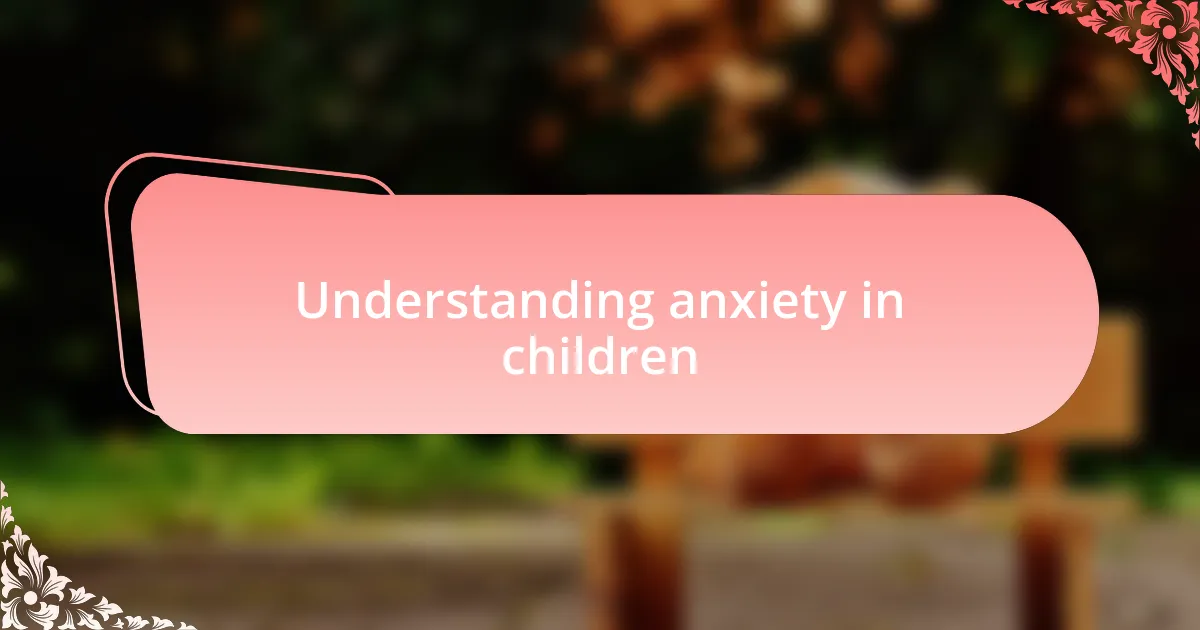
Understanding anxiety in children
Anxiety in children is more common than many realize, often manifesting in subtle ways that can be easily overlooked. I remember watching my niece cling to her mother at a family gathering, her eyes darting around the room filled with unfamiliar faces. It struck me then: how often do we dismiss a child’s nervousness as mere shyness when, underneath, it might be something deeper?
It’s fascinating how anxiety can present itself differently in each child. Some might exhibit physical symptoms like stomach aches or headaches, while others may become withdrawn or overly clingy. When I found myself dealing with my own child’s unexplained anger outbursts, it was a wake-up call to dig deeper. Could it be that her anxiety was manifesting in ways I hadn’t considered?
Understanding anxiety in children requires us to be both observant and empathetic. It’s about recognizing triggers—like transitions to a new school or changes at home—that can significantly impact a child’s emotional well-being. I often wonder, how can we foster an environment where kids feel safe to express their fears? By creating open lines of communication, we can empower them to share their feelings, making a world of difference in their anxiety journeys.
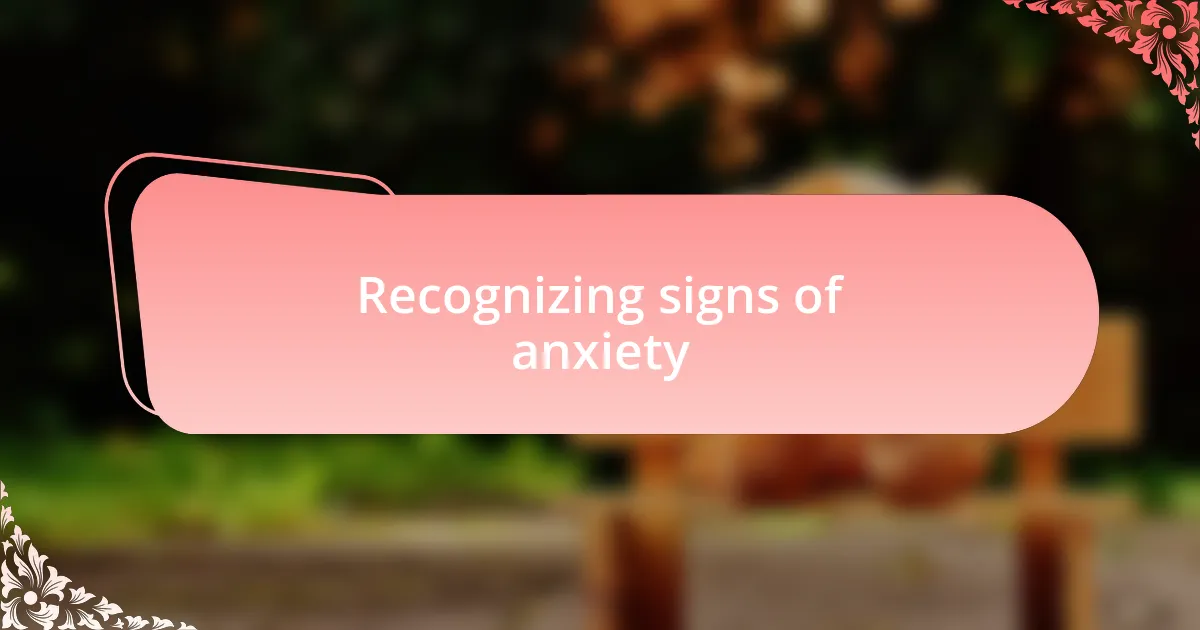
Recognizing signs of anxiety
Recognizing the signs of anxiety in children is often about paying attention to the subtle cues they display. I recall a moment when my friend’s son suddenly refused to go to a birthday party, claiming he felt sick. It was a simple excuse, but beneath it lay a deeper fear that went unspoken. Have you ever noticed your child reacting strongly to seemingly small situations?
Sometimes, children’s anxiety can manifest as irritability or trouble concentrating. I remember watching my own daughter struggle to complete her homework, a task that usually came easily to her. It was as if her mind was elsewhere, tangled in worries that she couldn’t articulate. How often do we consider that those little frustrations might be rooted in something more significant?
Another common sign is changes in sleep patterns or appetite. A close friend’s daughter stopped eating at mealtimes, which seemed trivial at first. However, after some conversations, it became clear that severe anxiety was at play. Realizing that these outward expressions were indicators of a deeper issue shifted my perspective on how to support children facing anxiety. What do you think could change if we actively looked for these signs in kids?
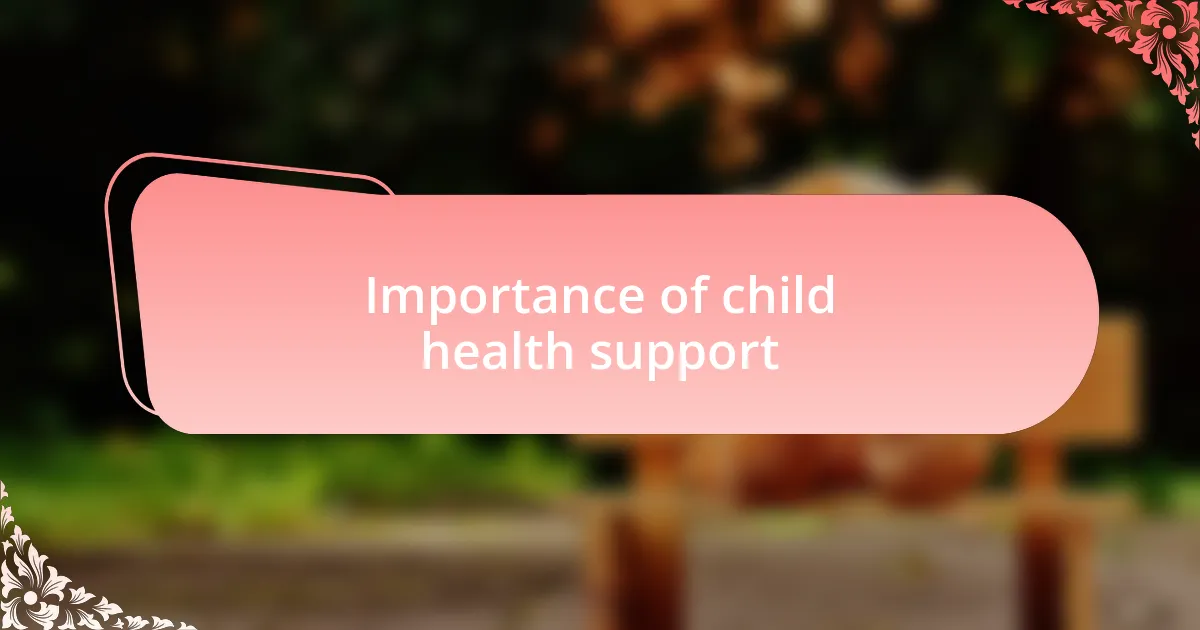
Importance of child health support
Child health support is crucial because it lays the foundation for a child’s emotional and physical well-being. Reflecting on my past, I remember when my niece struggled with feelings of isolation at school. It was the open discussions we had about her experiences that helped her recognize her worth and importance. Have you ever thought about how a supportive environment can alleviate a child’s struggles?
Moreover, providing consistent health support can significantly reduce long-term issues, both mental and physical. I’ve seen firsthand how my neighbor’s son thrived after they prioritized mental health resources, transforming anxiety into resilience. Isn’t it powerful to think that enabling children to express their feelings can lead to healthier coping strategies later in life?
Finally, addressing child health needs fosters a sense of security and belonging. I still recall being the shoulder for a friend’s daughter when her fears felt insurmountable; just being there for her made a world of difference. How might children flourish if they consistently felt heard and supported in their health journeys?
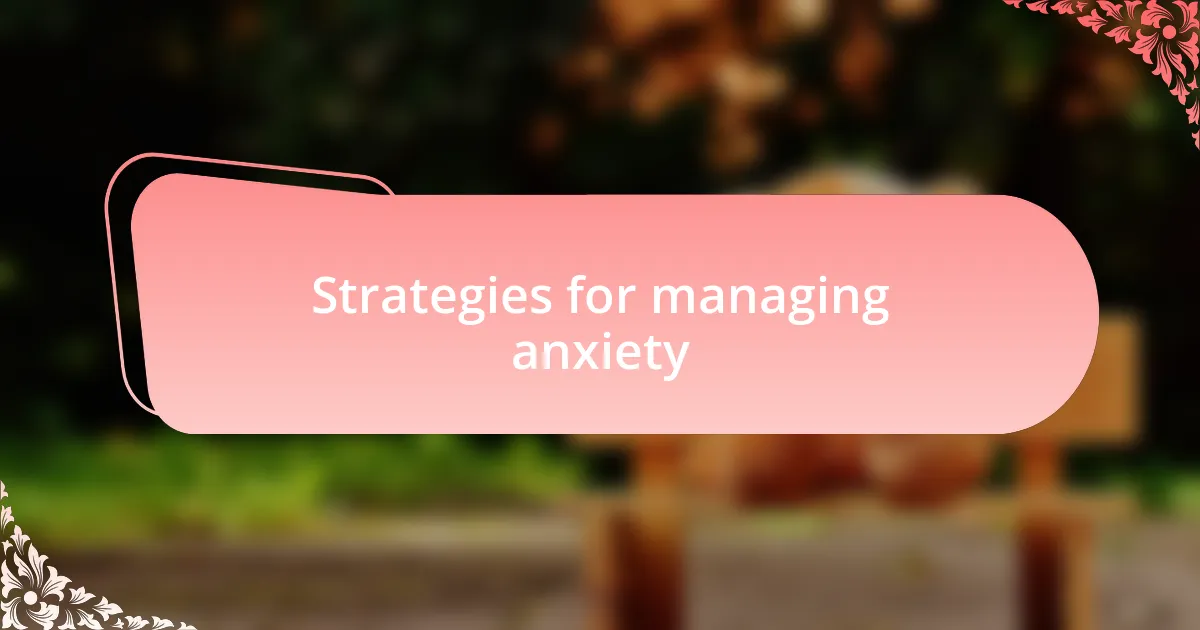
Strategies for managing anxiety
One effective strategy for managing anxiety is encouraging children to express their feelings through creative outlets like drawing or writing. I remember when my son faced anxiety during a school transition; he found great relief in sketching his thoughts. Have you noticed how art can provide a safe space for emotions?
Mindfulness practices, such as deep breathing and meditation, have proven beneficial for reducing anxiety. When I introduced my daughter to simple breathing exercises, I was amazed at how quickly she learned to calm herself during stressful moments. Isn’t it incredible how a few mindful breaths can ground us?
Lastly, establishing a daily routine can provide a sense of predictability that often eases anxiety for children. I once helped a family friend create a visual schedule for their anxious child, and it was astonishing to see how much more secure he felt. What small changes can parents implement to bring stability into their child’s life?
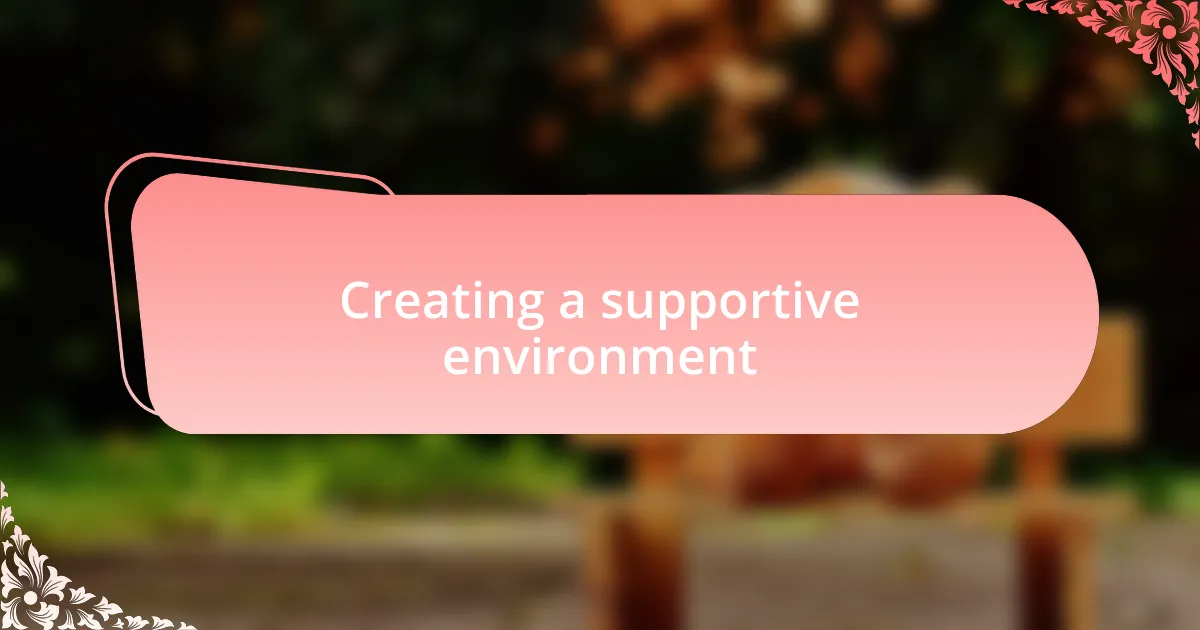
Creating a supportive environment
Creating a supportive environment involves fostering open communication between parents and children. I vividly recall a time when I sat down with my daughter, who had just come home from a particularly tough day at school. By simply asking her how she felt about it, I noticed a weight lift off her shoulders as she expressed her worries. How often do we underestimate the power of just listening?
Another key aspect is creating a comforting physical space. I sometimes rearranged the playroom into a cozy nook filled with soft blankets and her favorite books. The transformation encouraged her to retreat there whenever she felt overwhelmed. Have you ever noticed how a small change in environment can make a significant difference in how a child feels?
Finally, involving family members in managing anxiety can strengthen the overall support system. When I encouraged everyone in our household to share their own feelings and challenges, it not only normalised anxiety but also united us. Isn’t it amazing how shared experiences can help children feel less alone in their struggles?

My personal journey with anxiety
I remember the first time anxiety hit me hard. I was in a crowded place, and my heart raced as I felt trapped by the sea of faces. Did I think I could escape? No. But acknowledging that feeling was the first step in my journey. I learned that it’s okay to feel uncomfortable; it’s part of being human.
As I navigated my anxiety, I found solace in writing. Late at night, I’d pour my fears onto the page, often discovering patterns in my thoughts I never realized were there. Have you ever tried to express your worries through writing? It became a therapeutic outlet for me, transforming chaos into clarity.
Through this journey, I learned the importance of self-compassion. There were days I would berate myself for feeling anxious, thinking I should be stronger. But I gradually recognized that vulnerability isn’t a weakness; it’s a bridge to understanding. Isn’t it powerful to find strength in our struggles?